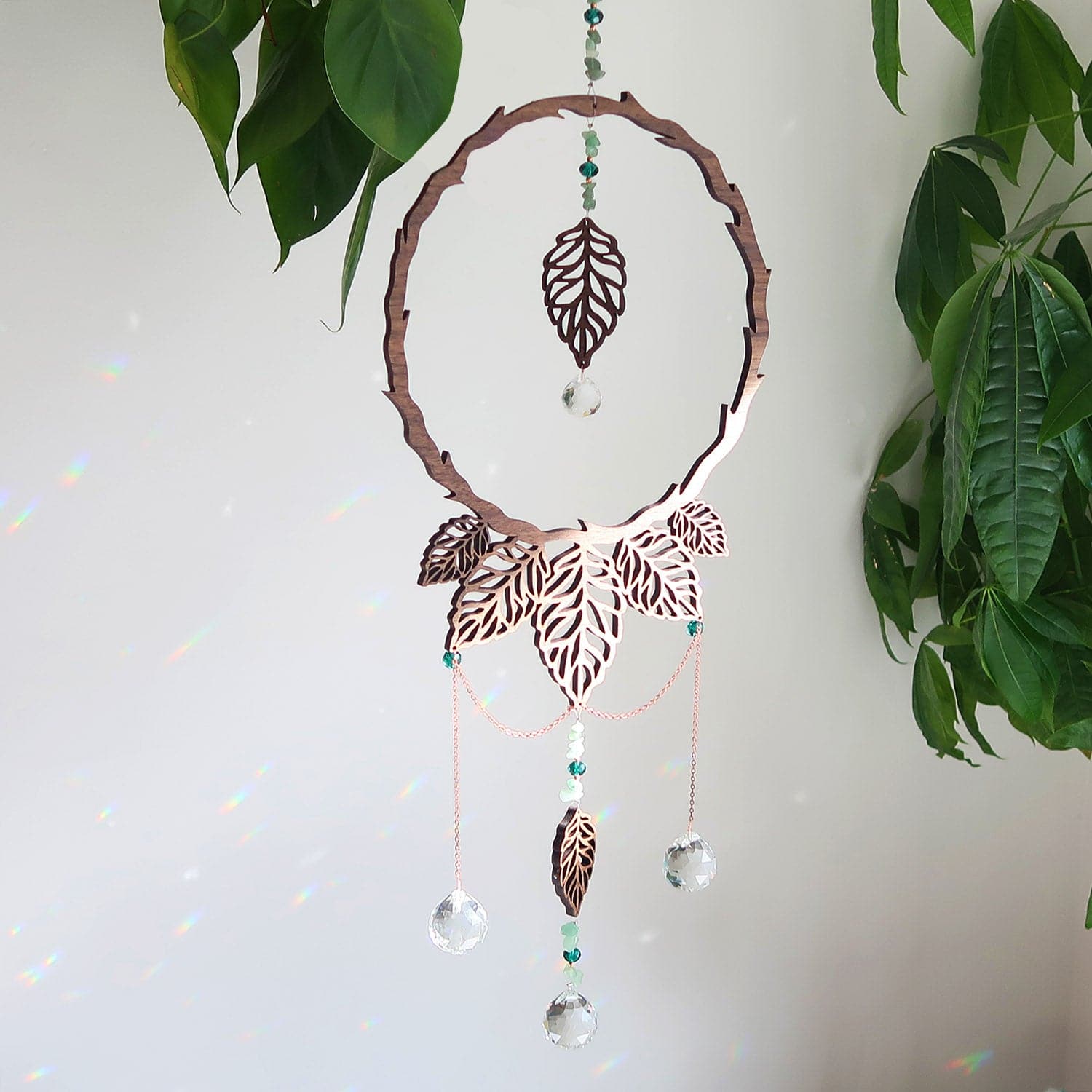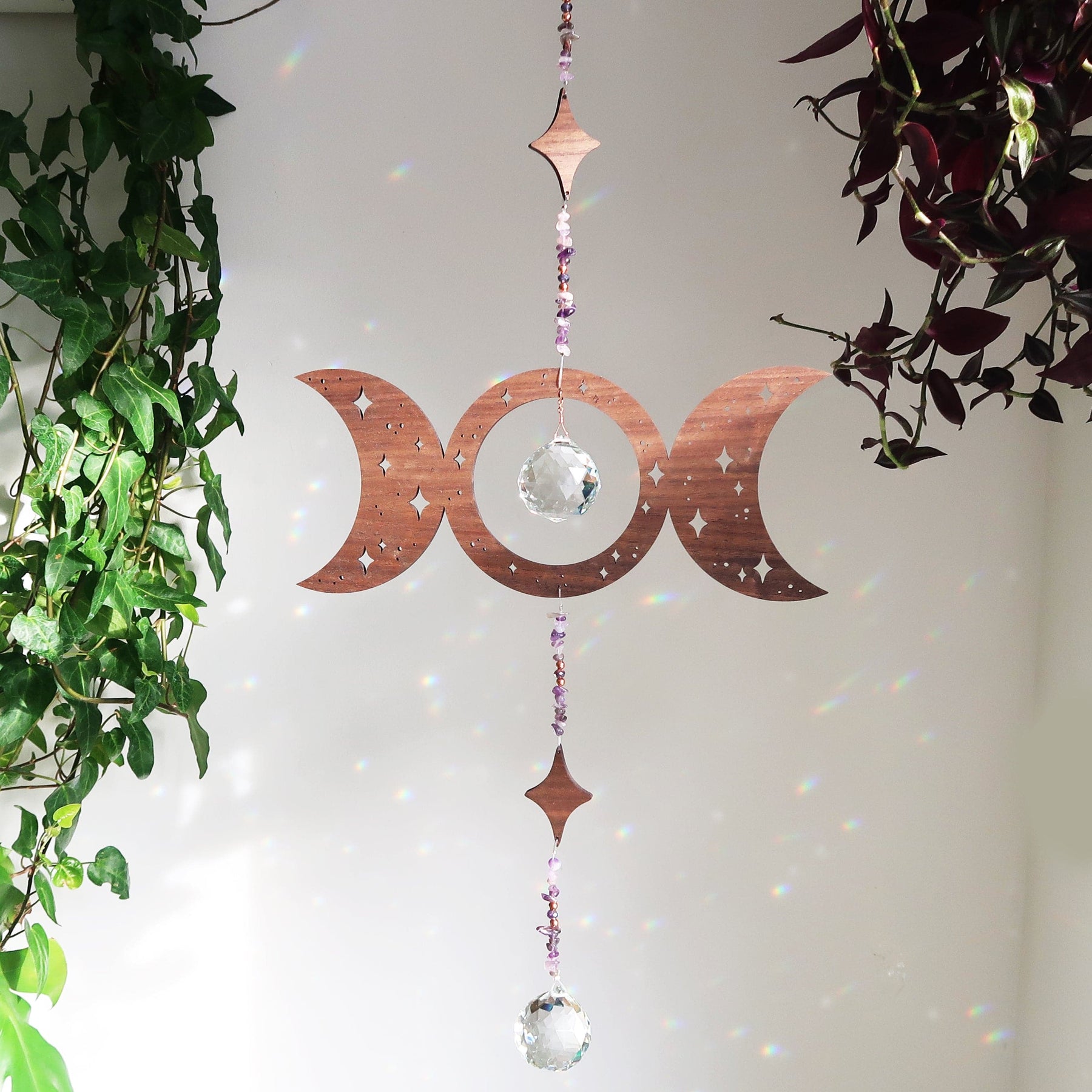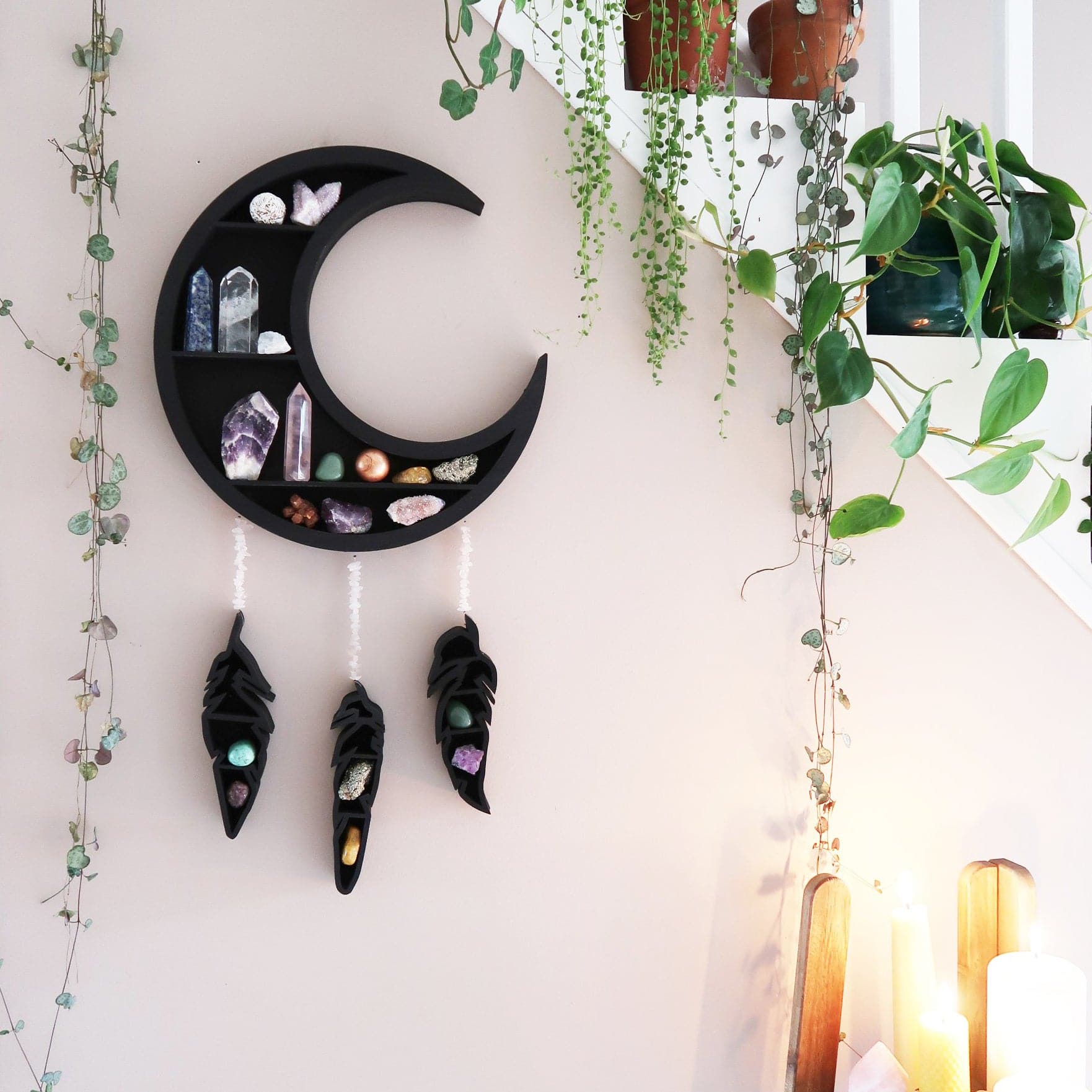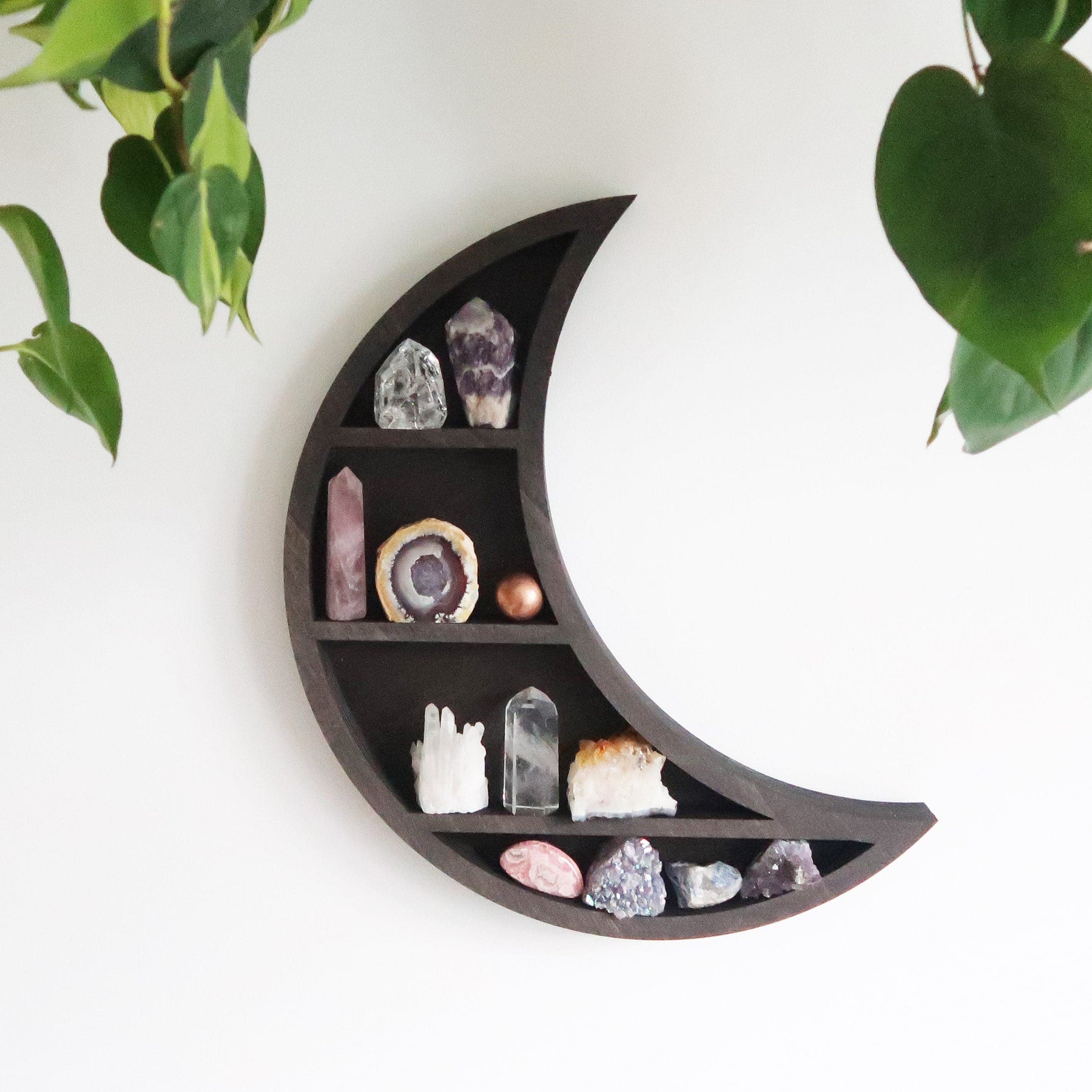Suncatcher Vs Dreamcatcher - 8 Key Differences Compared
Suncatchers and dreamcatchers both adorn our spaces with beauty and meaning.
They hang. They protect. They inspire.
Yet despite surface similarities, these spiritual decorations serve distinct purposes with unique histories and designs.
Drawing on two decades of experience in crystal work and spiritual practices, I've incorporated both into my spiritual practice. Understanding their differences helps us use them more intentionally in our sacred spaces.
Let's explore eight key differences between suncatchers and dreamcatchers.

1. Cultural Origins and History
Suncatchers and dreamcatchers emerge from entirely different cultural traditions.
Dreamcatchers originated with the Ojibwe (Chippewa) Indigenous people of North America as sacred protective items, while suncatchers have roots in European stained glass traditions that evolved into the crystal prism decorations we know today.
Dreamcatchers are traditionally handcrafted with a wooden hoop, usually willow, and a web-like pattern of sinew.
Their creation involves spiritual intention. Suncatchers gained popularity during the Victorian era when glass manufacturing improved, though crystal light refraction has decorated homes for centuries across many cultures.
Key Difference:
- Dreamcatchers: Native American spiritual tool with sacred significance
- Suncatchers: Decorative items with European glass tradition roots
2. Purpose and Spiritual Significance
Their intended functions differ dramatically. Look closely. The purposes reveal their essence.
Our Goddess Crystal Suncatcher demonstrates the primary purpose of suncatchers—to transform sunlight into rainbow prisms.

This handcrafted wooden design featuring the triple moon Goddess symbol incorporates crystals specifically chosen to create dazzling light displays.
Dreamcatchers were designed to protect sleepers by "catching" negative dreams in their web while allowing positive dreams to pass through, whereas suncatchers primarily harness sunlight to create rainbow displays while directing specific crystal energies into a space.
The Goddess Suncatcher, available with either amethyst or rose quartz, combines light-catching properties with crystal energy.
Amethyst protects. Rose quartz heals.
Both empower spaces with the divine feminine energy of the triple moon symbol.
You can check out our full range of beautiful crystal suncatchers here.
Key Difference:
- Dreamcatchers: Protective dream filters during sleep
- Suncatchers: Light-transforming crystal energy directors
3. Elements and Materials Used
The components of each reflect their distinct purposes.
Traditional dreamcatchers incorporate natural materials like wooden hoops, sinew webbing, and feathers, while suncatchers typically feature glass, crystal, or other reflective materials designed to interact with light.
Dreamcatchers traditionally use:
- Willow wood for strength and protection
- Sinew or plant fiber webbing
- Feathers for carrying prayers
- Natural beads
Suncatchers commonly include:
- Cut crystal or glass prisms
- Faceted gemstones
- Metal wire frames
- Copper elements for energy enhancement
Key Difference:
- Dreamcatchers: Natural, organic materials
- Suncatchers: Light-refractive crystals and metals
4. Placement and Optimal Location
Where you hang these items matters. Location determines function.
Our Dreamcatcher Moon Shelf exemplifies the perfect fusion of dreamcatcher elements with display functionality.

This unique shelf incorporates feathers hanging from hand-beaded gemstones while providing a crescent moon-shaped display for your spiritual items.
Dreamcatchers traditionally hang above beds to protect sleepers from negative dreams, while suncatchers must be placed in direct sunlight—typically in windows—to create rainbow light displays.
The Dreamcatcher Moon Shelf combines both worlds beautifully. Display your crystals in a protective design.
Choose from moonstone, rose quartz, amethyst, or mixed gemstone beads.
It creates a sacred space that works continuously—catching light by day, offering protection by night.
Check out our Dreamcatcher Moon Shelf here.
Key Difference:
- Dreamcatchers: Near sleeping areas
- Suncatchers: In windows with direct sunlight
5. Relationship with Light
These items interact with light in fundamentally different ways.
Dreamcatchers have a symbolic relationship with moonlight and darkness as they work during sleep, while suncatchers require direct sunlight to fulfill their purpose of creating rainbow prisms.
Dreamcatchers work in darkness. Many practitioners "charge" them in moonlight. Their effectiveness doesn't depend on light but on their spiritual properties.
Suncatchers need strong, direct sunlight. No sun, no rainbows. It's that simple. Their entire function revolves around light transformation.
Key Difference:
- Dreamcatchers: Work in darkness; associated with moonlight
- Suncatchers: Require direct sunlight to function
6. Design Structure and Patterns
Physical structure reveals purpose. Form follows function.
Our Dreamy Moon Wooden Shelf bridges the aesthetic elements of both traditions.
This crescent moon-shaped shelf, available in brown or black stain, provides display space for crystals with a celestial design that honors the dreamcatcher's night-time associations.

Dreamcatchers feature a circular hoop with a web-like interior pattern to "catch" dreams, while suncatchers typically incorporate multiple hanging reflective elements to maximize light refraction.
The Dreamy Moon Wooden Shelf captures celestial symbolism while offering practical display space.
At 43cm tall and 29cm wide, it presents your crystals beautifully. Showcase stones that could enhance either suncatchers or dreamcatchers.
This is just one of a full range of beautiful crystal shelves that we produce at our small workshop at Coppermoon. You can check out the full collection of crystal shelves here.
Key Difference:
- Dreamcatchers: Web pattern within a circular hoop
- Suncatchers: Multiple reflective elements arranged strategically
7. Sound Elements
Listen closely. One speaks. One remains silent.
Traditional dreamcatchers often incorporate elements like small bells that create gentle sounds in response to air movement, while suncatchers typically focus exclusively on visual effects.
The gentle tinkling of a dreamcatcher soothes sleeping minds. This auditory component works alongside visual and protective aspects. A full sensory experience.
Suncatchers work silently. They focus entirely on visual transformation. Their magic manifests through sight alone, creating dancing rainbows across your space.
Key Difference:
- Dreamcatchers: Include sound-making elements
- Suncatchers: Silent visual performers
8. Seasonal Effectiveness
The calendar influences how these items perform.
Dreamcatchers work year-round regardless of season, while suncatchers are most effective during sunny seasons, with effectiveness varying based on the sun's intensity and position.
Dreamcatchers maintain consistent protection. Winter or summer. Day or night. Their spiritual function continues uninterrupted.
Suncatchers depend on weather and season:
- Summer brings peak performance
- Cloudy days diminish effects
- Winter offers less opportunity
- Daytime hours only
Key Difference:
- Dreamcatchers: Consistent year-round effectiveness
- Suncatchers: Seasonal and time-of-day variations
Creating Magical Spaces with Both Traditions
You don't need to choose. Combine them. Create balance.
Dreamcatchers protect at night. Suncatchers activate your space by day. Together, they create continuous magic in your home. A perfect complement.
When selecting either item, consider intention, placement, materials, and cultural respect. Honor their differences while celebrating their shared beauty.
Whether you choose rainbow-creating crystal suncatchers, protective dreamcatchers, or both, these magical tools transform spaces with both beauty and purpose.

About the Author
Janie Fagan is the lead writer and resident crystal expert at Coppermoon.
With over 20 years of experience in spiritual practices and crystal work, Janie comes from a lineage of spiritualists who have passed down their wisdom through generations.
Her approach combines traditional knowledge with practical, modern applications, helping readers create sacred spaces that honor both ancient traditions and contemporary needs.
When not writing or working with crystals, Janie can be found tending to her moon garden, practicing sound healing, and exploring the connection between celestial movements and earth energies.
She believes that everyone deserves access to the tools and knowledge that make spiritual practice accessible and meaningful in everyday life.


Leave a comment